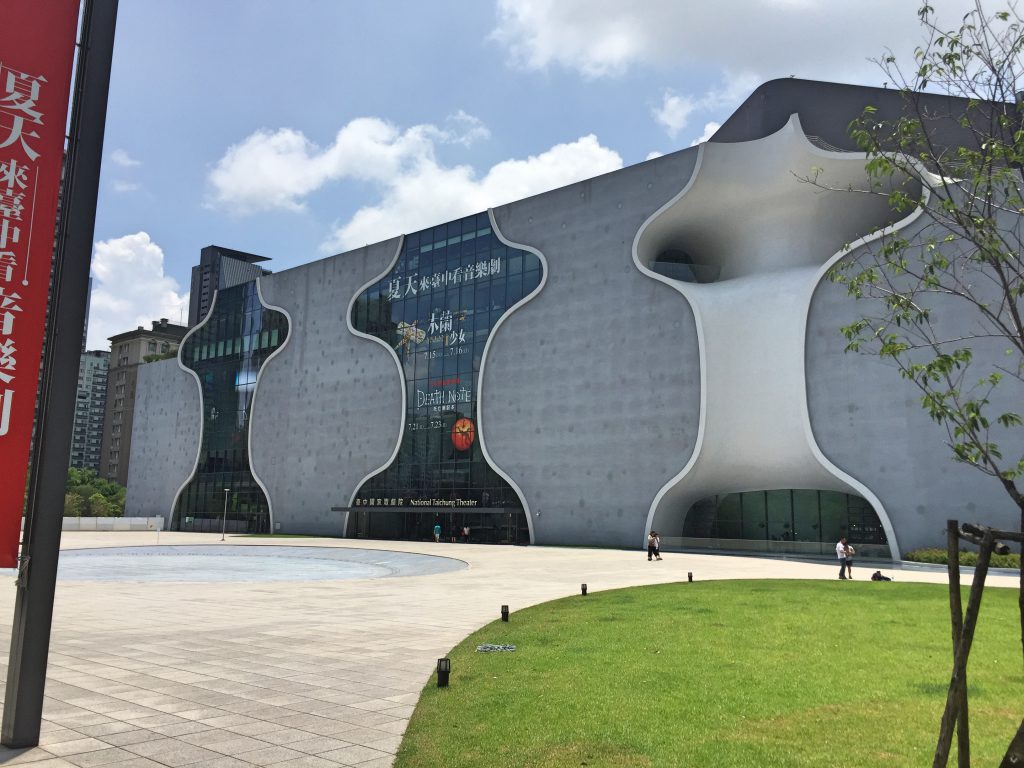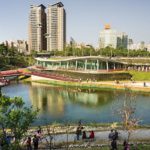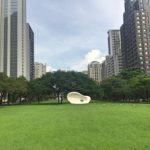 What is a National Theater?
What is a National Theater?
In 2009, construction began on a ground-breaking new project. Taichung wouldn’t just build an opera house, it would create a new kind of art space that the world would notice. It would be built entirely without beams or columns. It would attract world-class talent. It would inspire the cultural scene of a nation. It would be accessible to all.
The National Taichung Theater (NTT) is part of a three-way push by the Taiwanese government to build cultural landmarks throughout the island. Along with Taipei’s National Theater and Concert Hall and Kaohsiung’s Wei-Wu-Ying Center for the Arts, the theater aims to raise Taiwan’s international profile in the arts, and inspire a new generation of indigenous artists.
If you see the entire world as a river, then I want my buildings to be like a whirlpool.
Architect Toyo Ito
Five Years to Build
Officially opened in 2016, Taichung’s latest landmark took almost 5 years and NT$4.36 billion (US$141 million) to complete. The building was a true architectural challenge using no beams or columns in its construction. Built by famed Japanese architect Toyo Ito, it instead relies on a series of 58 tubular units connected together and covered in an integrating layer of sprayed concrete. Hour glass-shaped windows built into its facade help integrate the structure and give an impression of smoothness. It’s believed to be the first such theater in the world to pioneer such building techniques.
Inside, six storeys feature a grand theater capable of seating 2014 people, an 800-seat playhouse, restaurant and shopping complex. There is also a smaller 200-seat black box theater in the basement levels along with rehearsal rooms and parking. Outside is an outdoor plaza and theater with a spacious ‘sky-garden’ on the roof that offers limited views of Taichung.
A Personal Experience
NTT represents the idea that life is fluid and never fixed. Like the changing currents of a river, the theater isn’t defined by one thought, idea or style. It’s a multi-use space designed for everyone, and one that follows (or helps lead) the evolution of an island as it seeks self-identify among turbid international waters.
Seeing the theater in person is a matter of personal interpretation and everyone’s experience is likely unique. The expansive front facade of the building is a feature unto itself. The huge glass windows provide a tantalizing look at the structure’s interior as well as project video of current and upcoming performances.
Rethinking the Concept of Defined Space
As one steps inside for the first time, a cavernous lobby sucks you in and pushes you from one molded area to the next, akin to riding on a wave of air; as one part exhales out, the next inhales you in. Rooms don’t really have walls and it’s better to think of each floor as a set of interconnected spaces where each space is a continuity of the last.
The theater’s attempt to mix traditional use with non-traditional spaces produces an interesting result. Spaces have been defined by their purpose rather than physical boundaries. While the grand theater is situated on the first floor, surrounding spaces feature a versatile range of uses from art exhibitions, performance zones to a shopping center. All manner of art-related items are fold here from DIY projects to pop-up books, making this a surprisingly good place to shop for gifts and souvenirs.
The airy aesthetic continues via the staircase to the upper floors. Large hourglass windows delivery beautifully framed views of Taichung city from viewing terraces on the way up. Each floor has its own unique set of display and purchasing space and its worth spending time to explore each one. For those who don’t wish to walk, there are several elevators that go to a sky-garden on the roof.
A Worthwhile Visit
While it’s not possible to see inside the Grand Theater, Play Room or Black Box Theater, there’s enough ambiance and activity around the theater complex to keep any visitor occupied for several hours. (You can however view inside the Grand Theater here.) It’s also worthwhile visiting the National theater at night for a spectacular light show across the external facade of the building.
Tours & Performances
At the time of writing mostly musicals and plays are being shown at the theater. Visitors can purchase tickets online, from 7-11s Ibon system or directly at the front desk by cash or credit card. There are also daily scheduled tours (in Mandarin only) at 11:30, 13:30, and 15:30. Those with kids can attend the 11:30 and 13:30 tours. Night tours are also offered that take in the spectacular light show projected onto the building once the sun goes down. All tours are hour long, and aim to teach the style and construction of the theater as well as the vision of its architect, Toyo Ito.
Walk Around the Maple Garden
Fancy a stroll after a play? Maple Garden is a short walk up Henan Road from the National Taichung Theater, adjacent to Chaoma Bus Station. It has a lake with fish, nature trail and quiet overlooking cafe. The garden is recessed from the nearby road to give the impression of a quiet natural oasis amidst the busy city around. Best visited by day, the nature trail is interesting with lots of English signs, and plenty of room for kids to run around. The nearby coy lake has a surprising range of birds too including egrets, ducks and geese. Bring your own bread if you want to feed the ducks and fish. Nighttime brings a romantic ambiance to the place, though you may need a flashlight as interior lighting is remarkably insufficient. Bug spray is a must too as mosquitoes tend to proliferate around this time. Occasional musical performances are given on the cafe balcony from time to time. Entrance into the park is free.
Maple Garden Photo Credit By *嘟嘟嘟* (http://www.flickr.com/photos/enixii/8074062959/) [CC BY 2.0], via Wikimedia Commons
References
http://www.chinapost.com.tw/taiwan/local/taichung/2014/11/24/422527/state-of-art-opera.htm

